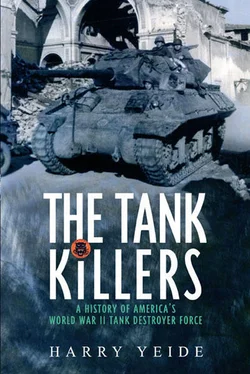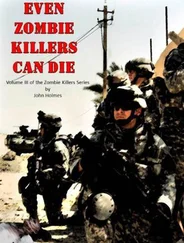Indeed, the famous bent-winged Stuka, the screaming terror of the blitzkrieg in Poland and France, was very much in evidence from the front all the way back to Algiers, as were Ju-88 bombers. The Stuka had yet to become the sitting duck for Allied fighters that it would when the Luftwaffe lost air supremacy. For now, Germany’s Me-109 and FW-190 fighters enjoyed the edge. Moreover, invasion planners had given low priority to antiaircraft formations, often removing them from convoys to make room for other units, a philosophy that resulted in a general shortage of antiaircraft artillery (AAA) into 1943. The AAA units that landed were often unfamiliar with just-issued equipment, poorly trained, and had not exercised with other arms. 41Official observers reported an “almost complete lack of air-ground cooperation” on the American side. 42
On 23 November, Capt Frank Redding reported to Brigadier Cass, commander of the British 11th Infantry Brigade. The brigade group made up the southernmost of a three-prong British advance toward Tunis. The 36th Infantry Brigade was pushing eastward on a road roughly ten miles inland from the coast, while Blade Force advanced along the center axis. All three British commands were to receive help from elements of CCB. Cass informed Redding that his forces had made contact with unidentified German units of unknown strength somewhere east of Beja in the broad Oued Medjerda Valley. The command was preparing to advance, and Cass expected the American tank destroyers to participate in an attack the next day. During the conversation, three enemy fighters attacked the brigade CP. 43
Arriving in Beja by mid-day on 23 November, Company C received orders to secure the high ground west of Medjez el Bab with the help of two British bren carrier-mounted infantry platoons from the Surrey Battalion. The Americans determined that they would not be able to communicate by radio with the British because of incompatible gear. No reconnaissance of the area had been conducted by the British, which meant that the small mixed command would function as brigade reconnaissance. Lacking effective protection against air attack, Redding decided to space his thirty-five vehicles out over the length of some five miles. 44
The command moved out at 1300 hours. On either side, rolling hills gave way to steep heights cut by wadis. The bren carriers led. The M6 light TDs followed by some two hundred yards and conducted reconnaissance by fire to the flanks with machine guns and 37mm cannons. Just past the crest of the last rise before the town of Medjez el Bab, the advancing force encountered a roadblock, which at first appeared to be undefended. Heavy and accurate 81mm mortar fire quickly disabused the men of their mistaken impression. Four of the thin-skinned bren carriers were disabled in the initial barrage, and the rest scuttled to cover.
Nobody could determine the source of the enemy fire. Redding deployed his three platoons to shoot at likely points. German fire soon zeroed in on the TDs and forced them to begin shifting about after firing. As the command group gathered to discuss next steps, the German fire adjusted to their location and forced the men to scatter. The incident, at least, demonstrated that the German observation post was located on a low mountain that provided line-of-sight to the location of the command group. Redding reasoned that the German mortars would be located on the reverse slope, which he had no means to engage. An attempt to maneuver the M6s into position to fire from the flank while the infantry advanced came to naught.
Help arrived in the form of a British artillery observer in a radio-equipped vehicle. His battery had not yet come into range, however, and the task force settled in to wait.
German aircraft again dive-bombed and strafed the tank destroyers repeatedly while mortar rounds pounded the position. German pilots were enjoying brilliant flying weather over their Tunisian bases, while bad weather was playing hob at Allied air bases. 45Miraculously, only one man was killed.
Shortly before dark, the battery was ready to execute fire missions. The observer had only a 1:200,000-scale French road map and did not know his own or the artillery’s position with any accuracy. The battery loosed a single round, and Redding and the observer rose to their feet to spot the impact. They quickly hit the dirt as the 5-inch shell landed only thirty feet in front of them. By the time the fire was corrected to the suspected German position, it was too dark to see or to support a planned night attack by the Surries.
The British tried valiantly anyway, but the Germans caught them on the slope with flares and badly shot up the attacking troops, who fell back. The next day, as the task force endured renewed strafing and dive-bombing attacks, the still unseen German force withdrew from the mountain. 46
* * *
British troops set out to take Medjez el Bab under a bright moon the night of 24–25 November. The plan called for two battalions to simultaneously enter the town from the north and south, but the German paratroopers—now buttressed by two 88mm guns, seventeen tanks, and an Italian antitank company—threw the British back with heavy losses. At 1730 hours, Captain Redding received orders to take his TDs into Medjez el Bab to eliminate the antitank guns. Considering what had happened to the British force, the orders appear bizarre in retrospect. Even more bizarre, perhaps, is that the tank destroyers were able to enter the outskirts of town. Darkness was falling already, however, and the TDs navigated the final distance by heading toward the sound of gunfire. Redding and his men could see little more than a few fires in town and the flash of tracer rounds, and they were unable to distinguish enemy from friend. It was the Americans’ first real experience with the fog of war. Redding later noted, “Abysmal ignorance became our prime noteworthy characteristic.”
That night, while British artillery pounded the town, the Germans slipped out and withdrew to Djedeida, only ten miles from Tunis. 47
When the Allies advanced again Thanksgiving Day to seize Medjez el Bab, the TDs were attached to the 2/13th Armored Regiment. The tanks passed Company C’s bivouac in the first gray light of dawn, and the TDs swung into their place in the column. Redding noted the flash of light reflecting off aircraft wings to the right front as one German and one Italian plane began a strafing run against the exposed Americans. His spirits lifted when he spotted eleven twin-boom P-38 Lightning aircraft racing toward the column—the first friendly air cover he had seen since near Beja. The Axis aircraft fled but left behind three wounded men from a Company C gun crew.
As the column pressed forward, Redding nervously eyed a large flight of Ju-88s that had appeared to the east. Suddenly, the vicious roar of aircraft cannon and machine gun fire came from the rear. Aircraft were diving at the column, pulling up, and circling to strike again. Redding and his men saw twin booms and American stars on the fuselages as the planes tore fifty feet overhead, engines snarling.
The P-38 squadron from the 14th Pursuit Group of the U.S. Twelfth Air Force raked the column five times, spitting explosive shells and bullets at men running for cover. The Lightning, its nose packed with a 20mm cannon and four .50-caliber machine guns, was if anything more terrifying than the Stuka to men on the ground in its sights. The P-38s finally pulled away, their mission apparently accomplished. Seven of the “enemy” soldiers lay dead and twelve wounded. Every vehicle in the company except for one M3 and one M6 had been knocked out, and nine of the vehicles were in flames.
The Twelfth Air Force would later admit to an official observer mission that its pilots were not well trained in ground-troop identification. The air arm noted that to a pilot in a speeding aircraft, American and German halftracks, trucks, tanks, and helmets—especially dirty ones—looked pretty much alike. The risk was high in that policy was for pilots over the front to attack any ground targets “not clearly identified” as friendly. 48
Читать дальше







